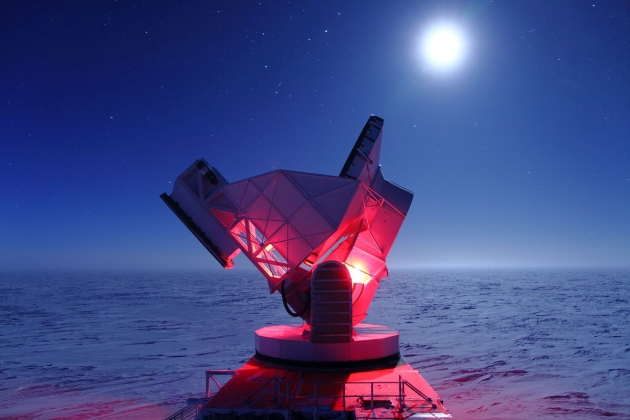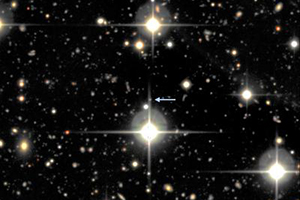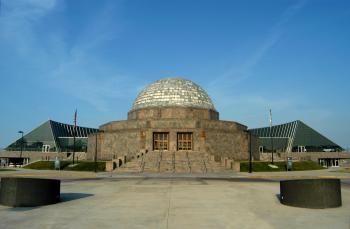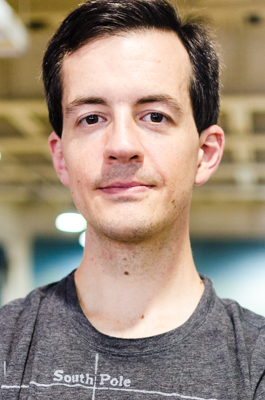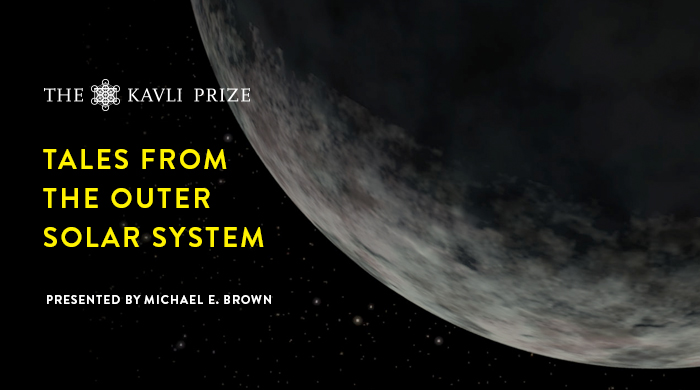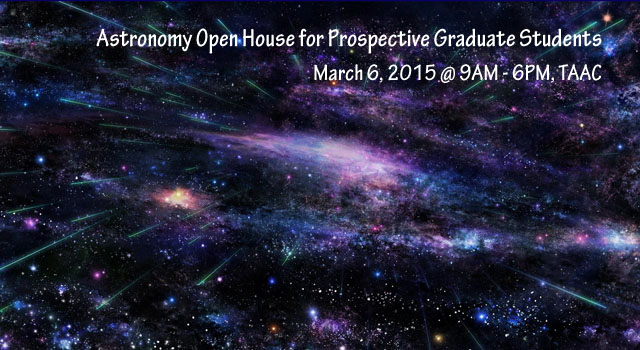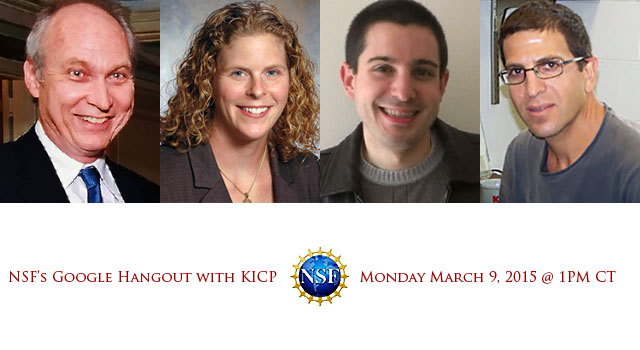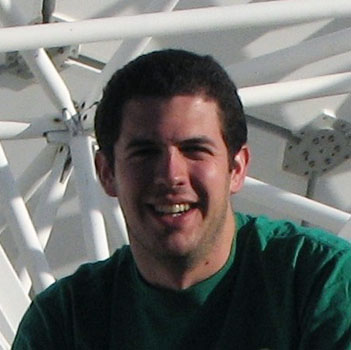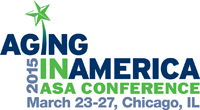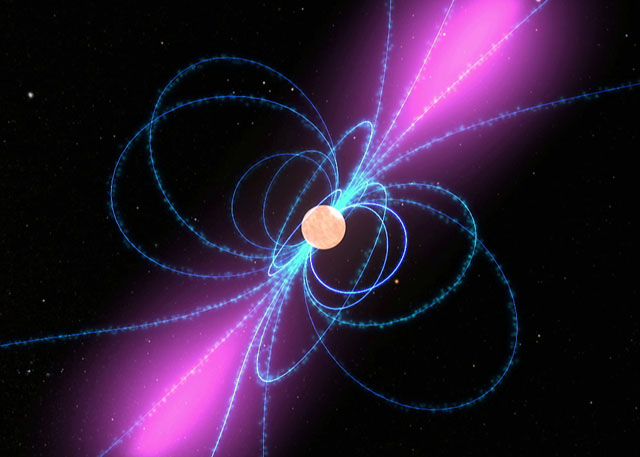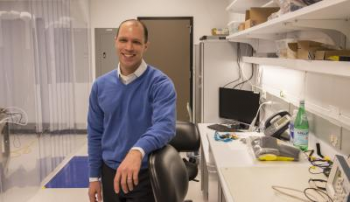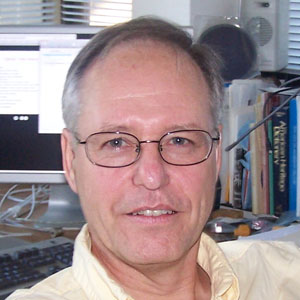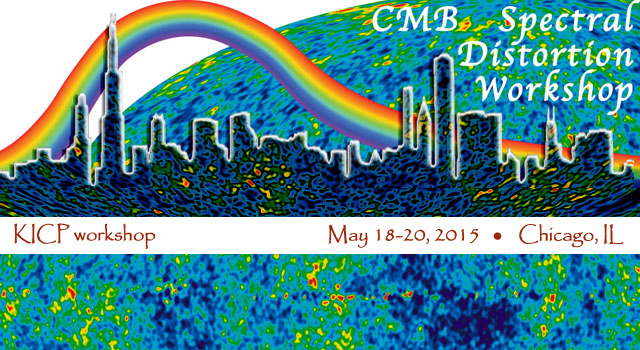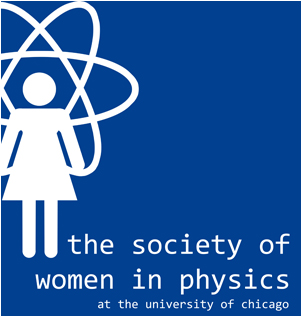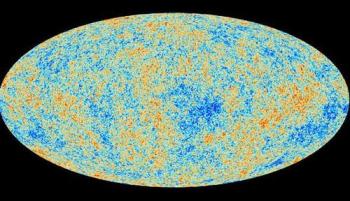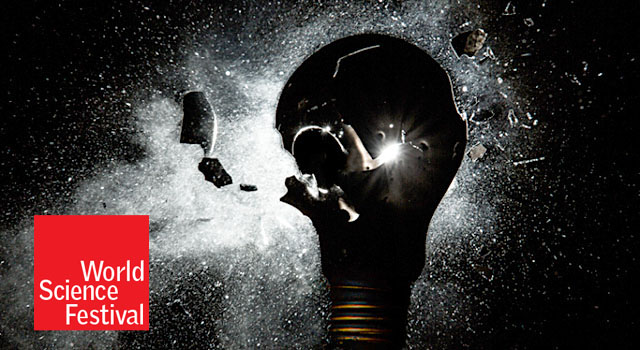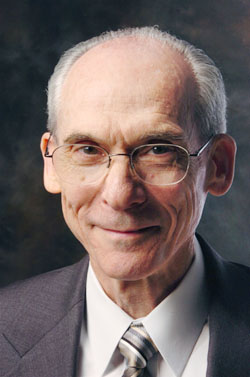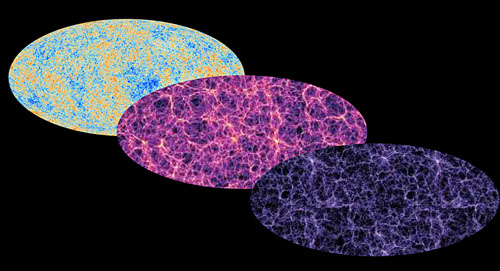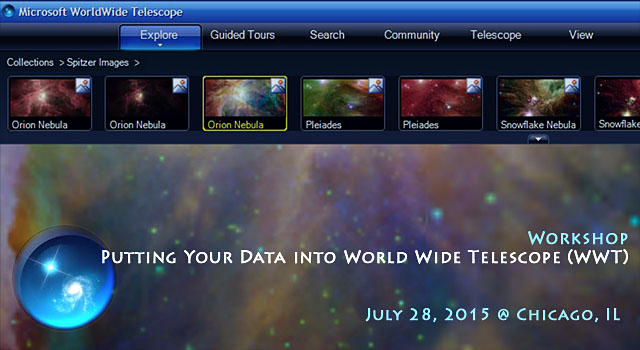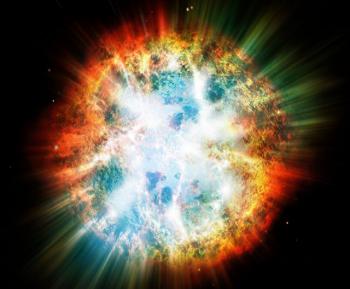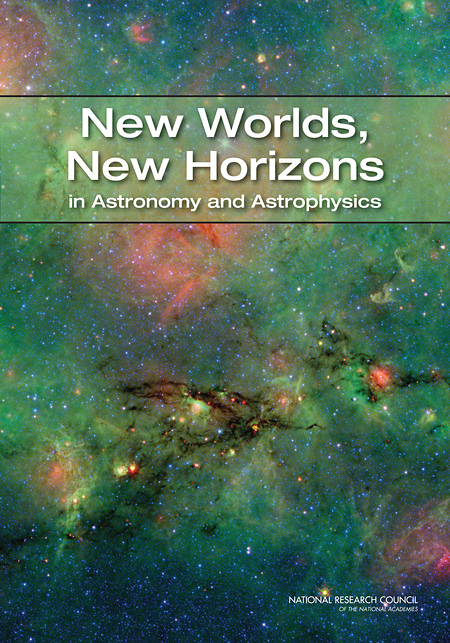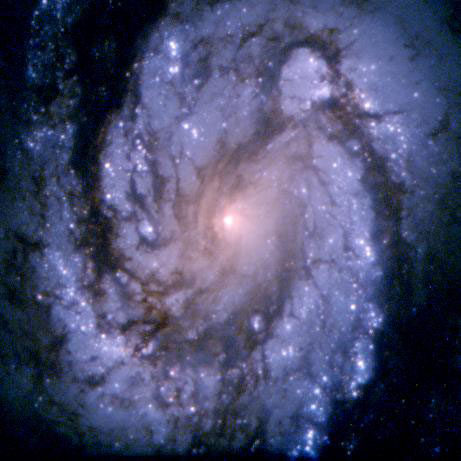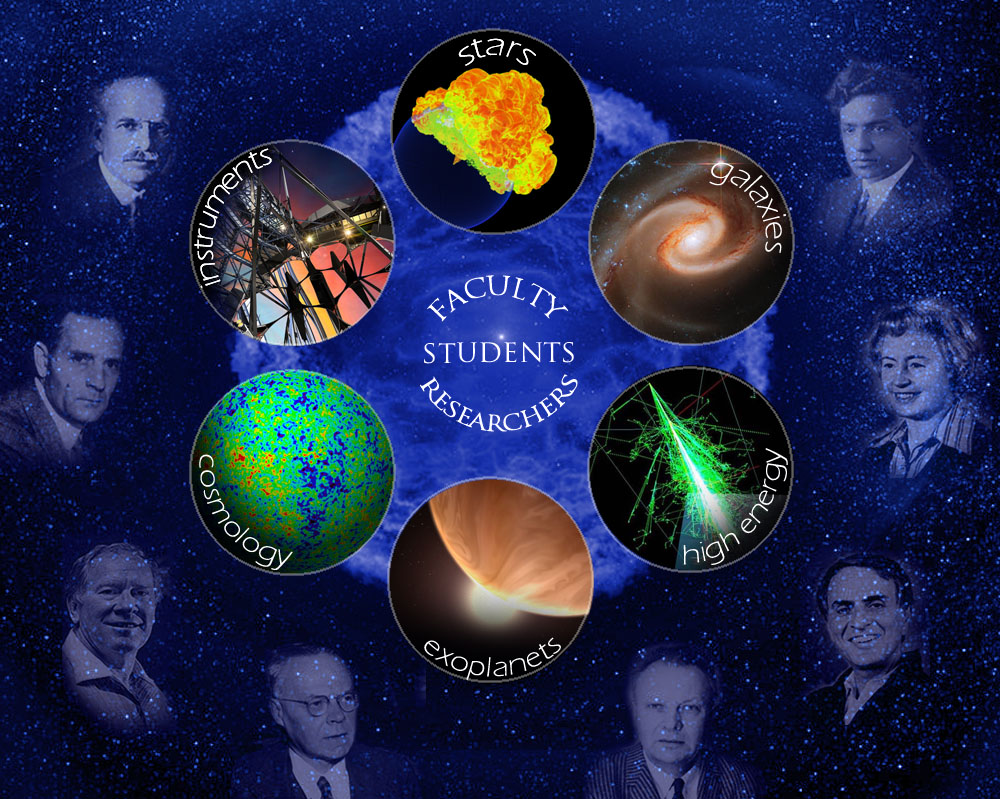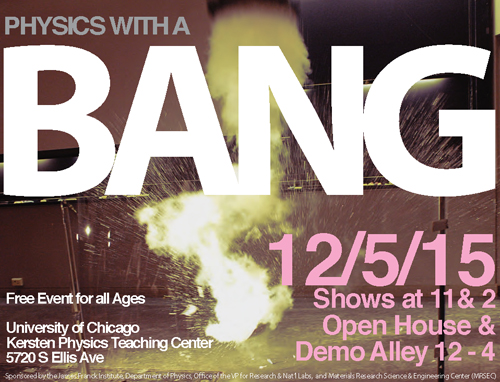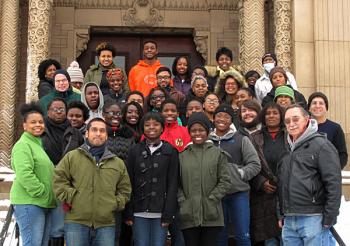 |
 |
 |
 |
 |
 |
 |
 |
 |
 |
 |
 |
|
Talks & Events
|
Workshops & Events: 2015 Michael Meyer, ETH Zurich, "Building a Predictive Theory of Planet Formation: Extrapolation versus Phenomenology in the Era of Direct Imaging" Planetary bodies provide suitable environments for the emergence of life. Thus knowing their distribution as a function of mass, orbital radius, and bulk composition can help constrain the possible number of habitable worlds. Observations in the accessible regions of our Galaxy provide empirical constraints on planet populations. Yet extrapolation of these results to the rest of the observable Universe requires understanding the dependence of formation and evolution on a wide range of initial conditions. On the one hand, this process is simple: small bodies grow into larger ones through collisions (and sticking) of solid particles, or through local gravitational instabilities. On the other hand, the specific outcomes depend on a large number of complex properties requiring coupled understanding of dynamics, chemistry, and radiative transfer over several orders of magnitude in solid particle size, gas density and orbital radius. I will first introduce some simple theories of planet formation, and derive expected outcomes as a function stellar mass. Then I will summarize recent observations that constrain these theories with a focus on the power of direct imaging for "model-breaking". Finally, I will discuss experiments (some underway with new IR instrumentation on 8-meter class telescopes, and others planned for future facilities) that aim to efficiently improve our understanding. One exciting prospect is the direct detection of circumplanetary disks around forming planets, which may be key to regulating planet masses. Physics colloquium: John Carlstrom, University of Chicago, "Physics and Cosmology with the Cosmic Microwave Background" The study of the cosmic microwave background (CMB) has driven spectacular advances in our understanding the origin, make up and evolution of our universe. We now have a standard cosmological model, ΛCDM, that fits all the cosmological data with only six parameters, although there are some tensions that may hint at that cracks in the model. Far from being the last word in cosmology, the model points to exciting times ahead using the CMB to explore new physics, i.e., inflation, dark matter, dark energy, neutrino masses and possible extra relativistic species, or dark radiation. This talk will review the current status and near term plans for CMB measurements, with emphasis on the South Pole Telescope, and discuss the plans for the next generation experimental program, CMB-S4. All Chicago Cosmology Colloquium: Alexander Szalay, Johns Hopkins University, "Baryon Acoustic Oscillations and Redshift Space Distortions" The talk will present results about measuring the Baryon Acoustic Oscillation signal in redshift surveys. The impacts of various effects like survey geometries, redshift space distortions, nonlinear corrections will be discussed. In particular, we will show that redshift-space distortions can substantially sharpen the BAO peak in directions close to the line of sight. We also demonstrate a detection of Baryon Acoustic Oscillations in the SDSS Main Galaxy Survey. Seth R Siegel, California Institute of Technology, "Multiwavelength Analysis of Galaxy Clusters" I will report on the joint analysis of X-ray, weak lensing, strong lensing, and Sunyaev-Zel'dovich (SZ) measurements of the CLASH sample of 25 massive galaxy clusters. The high-quality multiwavelength data is able to constrain more realistic parametric models for the distribution of dark and baryonic matter in the galaxy clusters, avoiding biases in mass estimates that result from the assumptions of spherical symmetry and hydrostatic equilibrium. I will present results for a subsample of the clusters, including constraints on the level of non-thermal pressure support in the intracluster medium (ICM). I will conclude by introducing the Multiwavelength Sub/millimeter Inductance Camera (MUSIC), a new photometric imaging camera for the Caltech Submillimeter Observatory that is simultaneously sensitive to four bands at 150, 230, 290, and 350 GHz, and is ideally suited for studies of the ICM through the SZ effect. I will describe the characterization and removal of noise sourced by MUSIC's Microwave Kinetic Inductance Detectors (MKIDs) and their readout electronics. Lorenzo Moncelsi, California Institute of Technology, "Cosmology above the clouds with SPIDER" SPIDER is a balloon-borne microwave polarimeter designed to measure cosmological B-modes on degree angular scales in the presence of Galactic foregrounds. With six independent telescopes housing a total of ~2000 detectors in the 90 GHz and 150 GHz frequency bands, SPIDER is the most instantaneously-sensitive CMB polarimeter deployed on the sky to date. SPIDER was successfully launched from McMurdo Station, Antarctica in January 2015 and acquired science data for 16 days. I will briefly cover the in-flight performance and the expected analysis challenges. Pending recovery, the SPIDER team is already planning the next flight, featuring one or two foreground-optimized channels, which will allow us constrain the primordial tensor-mode amplitude at the level of r < 0.03 (99% CL), even in the presence of foregrounds. The Cabinet: Cosmos Website The vastness of the observable universe; the seeds of ancient religious belief; a mythical faraway world; the humming network of your neighborhood streets; intricate technological systems; blood vessels inside our bodies; nerves of the brain; the world of a single cell; known and unknown totalities. All these visions conjured by this single term, with infinite possibilities remaining. Our Cosmos Cabinet is built on the idea that such a concept can inspire scientists and artists equally to inquiries and creations that will engage all who are mystified and intrigued by the connections, relationships, orders, limits and limitlessness, and the tremendous scale of the world and worlds we inhabit or imagine. Please join us for a series of performative presentations by scholars and artists from the University of Chicago and beyond, who explore cosmology and its reverberations. EVENING PROGRAM
Presenter & Performer Bios
KICP Dark Matter meeting The theme will be "beyond the simple WIMP" and focusing on a broader framework of the dark matter sector. AGENDA
Adler colloquium: Andy Howell, Las Cumbres Global Telescope/UC Santa Barbara, "Understanding Mysterious Sources of Energy in Supernovae" Website In the past few years new classes of supernovae have been discovered that are both brighter and fainter than previously thought possible. The superluminous supernovae have luminosities 100 times greater than a core-collapse supernova, and their origin is a mystery. I will present data on two of the most distant and best-observed events from the Supernova Legacy Survey, and the first radiative transfer model that gives insight into their origin. They seem to result from the creation and spin-down of a magnetar. I'll also discuss a range of both normal and exotic supernovae from the local universe, including an even newer class of superluminous supernovae, and show how new observations are revealing or limiting SN progenitors for the first time. The Las Cumbres Observatory Global Telescope Network (LCOGT) is one of the latest tools allowing new kinds of observations with its 11 node network of one and two meter robotic telescopes spanning the globe. We have now begun the LCOGT Supernova Key Project, which will collect the largest sample of low-redshift supernovae ever obtained: lightcurves and spectroscopy on 450 supernovae over 3 years for use in cosmology, understanding explosions, and determining supernova progenitors. Mark SubbaRao, Adler Planetarium, "The Future of the Planetarium" Website The first planetarium was developed over 90 years ago. Today thousands of planetaria exist all across the world. This talk will argue that the future of the planetarium is to make the transformation to a big data visualization facility. After reviewing the state of the art in planetarium visualization the talk will conclude with a invitation for University researchers to visualize their data sets at the Adler Planetarium. Speaker Biography: Mark SubbaRao is the Director of the Space Visualization Laboratory at the Adler Planetarium. He received his bachelors degree in engineering physics at Lehigh University and his Ph.D from Johns Hopkins University in astrophysics. His Ph.D thesis concerned the characterization and evolution of the luminosity function of galaxies. After obtaining his degree he worked as a post doctoral researcher at the University of Chicago on the Sloan Digital Sky Survey a project to make a 3D map of the Universe. He has led the development of major exhibition galleries at the Adler such as "The Universe: A Walk Through Time and Space" and has also produced, written and directed a number of stereoscopic videos and full-dome planetarium shows. These include the planetarium shows "Welcome to the Universe" and "Cosmic Wonder." His visualizations have been widely shown in print and television. He was part of a team that created a first-prize-winning visualization in the 2011 International Science and Engineering Visualization Challenge. He was also on a team that was awarded the best visualization at XCEDE 2013. Dr. SubbaRao chairs the international Planetarium Society's Task Force on Science and Data Visualization, which seeks to realize the potential of the planetarium as a scientific visualization tool. Broader Horizons: Stephen Hoover, Civis Analytics In mid-2014, I left a postdoc as a cosmologist at the University of Chicago to join Civis Analytics as a "data scientist". Civis is a 2-year old Chicago-based tech company that helps organizations use the data they have to connect with the people they care about. Data science is the core of Civis's business, and to us that means smart applications of statistics and machine learning to make sense of real-world person-level data. In this talk, I'll describe what a data scientist does at Civis Analytics, how my PhD in physics prepared me for what I do now, and what a physicist or astronomer could do to prepare for a transition to data science. Karen Kolb Flude, Aging with Ease, Forward Chicago, "Astrophysics for Older Adults" The KICP has a substantial astronomy/physics/cosmology outreach effort underway at Chicago City Senior Centers, in which we've brought astronomy and physics content to ~200 seniors free of charge, followed by subsidized field trips to the Adler Planetarium. If you think you might be interested in participating, this is the perfect opportunity to get involved. The session will be led by gerontologist Karen Kolb Flude, gerontologist, and KICP postdoc Daniel Grin, on Thursday March 5th, 10 AM-12 PM, in the LASR Building, in the central conference room. The session will begin with a short overview of our existing program. We'll then hear from Karen Flude about the motivation for lifelong learning and senior outreach, the specific challenges seniors face worldwide, and then some important tools for participating in senior outreach effectively. The session will wrap up with an opportunity for attendees to show the group any existing presentation material and then get helpful feedback on tailoring it to a senior citizen audience. Kavli Prize Lecture: Michael E. Brown, California Institute of Technology, "Tales from the Outer Solar System" Website Join us on Thursday, March 5, from 7:30 to 9:30 pm for the first Kavli Prize Lecture and Q&A session by 2012 Kavli Prize Laureate in Astrophysics, Michael E. Brown, from the California Institute of Technology. Following the Q&A portion of the lecture guests will have a chance to interact with Michael Brown and Adler astronomers during a reception in the Welcome Gallery. Coffee and refreshments will be served. The past decade has seen an explosion in the discoveries of Pluto-sized and near Pluto-sized bodies in the outer Solar System, giving rise to a new classification of "dwarf planets." Like Pluto, each of these largest dwarf planets has a unique story to tell about the history and evolution of the Solar System. Dr. Brown will discuss the discoveries of these objects and the new views of giant collisions, stellar encounters, and planetary rearrangement that we are gaining from their study. Finally, he will show intriguing new evidence that there is an even larger object lurking far beyond these dwarf planets. This object, if we can find it, will finally silence the lingering questions about Pluto and planethood, for this object, if we can find it, will be the new rightful 9th planet. Michael E. Brown has been a professor of planetary astronomy at the California Institute of Technology (Caltech) since 2003. His team has discovered many trans-Neptunian objects (TNOs), notably the dwarf planet Eris, the only known TNO more massive than Pluto. He has referred to himself as the man who "killed Pluto", because he furthered Pluto being downgraded to a dwarf planet in the aftermath of the discovery of Eris and several other probable trans-Neptunian dwarf planets. He is the author of How I Killed Pluto and Why It Had It Coming, published in 2010. There will be a live domecast of this presentation to the Denver Museum of Nature and Science, the Peoria Riverfront Museum, and the Flandrau Planetarium in Tucson, Arizona. Astronomy Open House for Prospective Graduate Students
NSF's Google Hangout with KICP Website NSF-funded Physics Frontiers Centers are pushing the frontiers of science across the disciplines of physics. The Kavli Institute for Cosmological Physics (KICP) tackles the big questions in cosmology - dark matter, dark energy and how the Universe began. At 2 pm ET / 1 pm CT on Monday, March 9, the NSF Physics Division will host a live hour-long Google Hangout with KICP. We'll talk with the KICP Director and other members about the exciting science going on there including research on the cosmic microwave background and dark matter as well as the center itself and its innovative activities in graduate and postdoctoral education and programs that advance the broader understanding of science. You'll even be able to participate in the discussion using Twitter! No matter what your area of physics or the stage of your physics education or career, tune in to hear all about KICP and just what makes it a PFC.
Gary Zank, University of Alabama at Huntsville, "Plasma Physics of Astereospheric Boundary Regions in a Partially Ionized Interstellar Medium e.g., the Heliosphere" Many stars find themselves in an environment that is partially ionized, including our Sun. The coupling of typically neutral H and plasma plays a fundamental role in determining the structure and properties of the outer boundaries between the stellar wind and the ISM. The plasma itself is modified significantly by the creation of pickup ions, which are now of considerable interest in the heliospheric example. Pickup ions (PUIs) in the outer heliosphere and the very local interstellar medium (VLISM) are created by charge exchange between protons and hydrogen (H) atoms, forming a thermodynamically dominant component. In the supersonic solar wind beyond ~10 AU, in the inner heliosheath (IHS), and in the VLISM, PUIs do not equilibrate collisionally with the background plasma. Using a collisionless form of Chapman-Enskog expansion, we derive a closed system of multi-fluid equations for a plasma comprised of thermal protons and electrons, and suprathermal PUIs. The PUIs contribute an isotropic scalar pressure to leading order, a collisionless heat flux at the next order, and a collisionless stress tensor at the second-order. The collisionless heat conduction and viscosity in the multi-fluid description results from a non-isotropic PUI distribution. A simpler 1-fluid MHD-like system of equations with distinct equations of state for both the background plasma and the PUIs is derived. We discuss briefly linear wave properties in a PUI-mediated 3-fluid plasma model for parameters appropriate to the VLISM, the IHS, and the solar wind in the outer heliosphere. Five distinct wave modes are possible: Alfven waves, thermal fast and slow magnetoacoustic waves, PUI fast and slow magnetoacoustic waves, and an entropy mode. The thermal and PUI acoustic modes propagate at approximately the combined thermal magnetoacoustic speed and the PUI sound speed respectively. All wave modes experience damping by the PUIs through the collisionless PUI heat flux. The PUI-mediated plasma model yields wave properties, including Alfven waves, distinctly different from those of a standard 2-fluid plasma model. Broader Horizons: Reid Sherman, "Career Phase Transition: Finding work in science policy" As a AAAS Policy Fellow in NASA's Earth Science Division, Reid Sherman gets to see how the US government thinks about its satellite resources, and how decisions get made about the future of earth science research and climate monitoring systems. Prior to that, he has worked for both for-profit and non-profit institutions, and studied the STEM workforce and the state of American postdocs. In this talk, he'll share how he moved from academia into government, what policy work is really like, and some lessons he's learned about making the career transition. Winter 2015 Postdocs Symposium
American Society on Aging Workshop: "Bringing Astrophysics to Older Adults" Website Location: Michigan A (East Tower, Bronze Level) , Hyatt Regency Chicago Description This session will highlight a new program to bring astrophysics to older adults, where older Chicagoans are learning all about space from the researchers themselves. Come learn about how the physicists were prepared to work with older adults, how the programming was marketed and implemented, and the outcomes of this novel project. Objectives 1. Increase understanding of opportunities to interact with University or Research settings and to bring their expertise to older adults in your community. 2. Identify components of the training that was provided to prepare astrophysics faculty to have a successful presentation to older adults. 3. Recognize the different marketing and outreach techniques used to bring older audiences to the project and programming. 4. Develop ideas for replication of high level programming in their own communities. 5. Learn about the experience of and lessons learned by a physics researcher working with older adults and the aging network, and bringing their expertise to a new audience. Outcomes 1. Physicists learned how to better reach older audiences 2. Older adults were exposed to high level science programming 3. Collaboration between the University of Chicago, Chicago Department on Aging and other community-based organizations. 4. Development of a model to unite university faculty with older adult programming. Presenters
Astronomy Conversations: Megan Bedell and Sean Mills, "Exoplanets" Have you always wanted to meet the people behind the science at the Adler? During Astronomy Conversations, you can exchange ideas with Adler space science and technology experts and learn more about ongoing Adler projects. 81st Compton Lectures: Andrew McCann, "Nature's Timepiece: The Exotic World of Pulsars" Every Saturday morning beginning April 4, through June 6, 2015; lectures start at 11:00 a.m. (No lecture on May 23rd, Memorial Day weekend). Neutron stars are born in the final moments of the supernova death of massive stars and, in keeping with their exotic origin, they exhibit unmatched extremes in a variety of ways. Not only are they the smallest stars we know of, neutron stars are the most dense solid objects in the known Universe. Their surface gravity is 100 billion times that of the Earth and their magnetic fields' strengths, which can reach 1015 Gauss, are the strongest known to exist. Neutron stars are born rotating rapidly and their emission, like the beam from a lighthouse, is observed as a highly stable and regular periodic pulsation - hence the name 'pulsating star' or 'pulsar'. Although pulsars were discovered over 40 years ago and the number of known pulsars exceeds 2400, the physical processes which power the vast array of unique and often bizarre phenomena observed from pulsars are poorly understood. Explaining the observed behaviour of neutron stars has become one of the most challenging puzzles in high-energy astrophysics. Despite the longstanding mystery of their emission, the steady and predictable pulsations from pulsars make them remarkably powerful astrophysical tools. This duality has put pulsars at the centre of some of the most compelling astrophysical research of the last few decades. Each week we will explore different aspects of this duality, by reviewing pulsar phenomena in different wave bands (radio, optical, x-ray, gamma-ray) and by discussing the role of pulsars in tests of Einstein's theory of relativity and in the search for gravitational waves. No scientific background is required -- just bring your curiosity. Broader Horizons: Krista Martocci, Software Engineer @ Gro Intelligence I am currently working at a small start up company called Gro Intelligence, which has offices in Nairobi and New York City. Our main focus is increasing the quality and access to data of agricultural commodities as well as the environmental and market effects that relate to agriculture. I will talk about my current role as a software engineer and how I adjusted from astrophysics, and what it is like to work at a start up as compared to academia. Harper Lecture: Edward W. "Rocky" Kolb, "Brave New Worlds" Website UChicago's astronomers travel from Hyde Park to all continents of the world, as well as outer space, to explore the universe. In this lecture, Edward W. "Rocky" Kolb will describe the quest of UChicago astronomers to unlock the mysteries of the universe: dark matter, dark energy, and the possibility that we are not alone. Edward W. Kolb (usually known as Rocky) is the dean of the Division of the Physical Sciences and the Arthur Holly Compton Distinguished Service Professor in the Department of Astronomy and Astrophysics and the College at the University of Chicago. He is the founding head of the Theoretical Astrophysics Group, the founding director of the Particle Astrophysics Center at Fermi National Accelerator Laboratory, a fellow of the American Academy of Arts and Sciences and the American Physical Society, and the recipient of numerous teaching awards. Kolb's book The Early Universe, coauthored with Michael Turner, is the standard textbook on particle physics and cosmology. Cosmosis Conversation: "The Artist and Scientist: Understanding Our Universe and Place Within featuring Sarah and Joseph Belknap + Jacob Bean" Website Join us for a conversation between COSMOSIS artist-duo Sarah and Joseph Belknap and exoplanet-expert Jacob Bean as they orbit topics relating to art, experimentation, and our existence within the environment of space. This intimate discussion will give the audience a chance to listen and ask questions about the Belkaps and Bean's processes, allowing for greater access and understanding of the fields of art and science. Harper Lecture: Stephan Meyer, "Researching the Universe in Antarctica" The South Pole Station is an important observatory for astrophysics and cosmology research, but because of the extreme conditions and remoteness of the site, designing, constructing, and operating its research tools is a challenge and an adventure. Several telescopes operate throughout the night - which lasts six months in Antarctica - gathering information on cosmic microwave background radiation and distant clusters of galaxies to explore how the universe as we know it evolved. Stephan Meyer, LAB'70, a member of the South Pole Telescope team, will talk about the science being investigated with these telescopes and the excitement of carrying out research on the Antarctic continent. Meyer is a professor in the Departments of Astronomy & Astrophysics and Physics, the Enrico Fermi Institute, and the College. He was a postdoctoral associate and then assistant professor of physics at MIT before joining the University of Chicago faculty in 1993. CMB Spectral Distortion Workshop Website The Kavli Institute for Cosmological Physics (KICP) at the University of Chicago is hosting a workshop on CMB spectral distortions. The frequency spectrum of the Cosmic Microwave Background has been shown to be a blackbody to a precision of 50 parts per million. However, at higher sensitivity the CMB is expected to show distortions from the blackbody shape. These distortions contain the signatures of energy-releasing processes in the early universe. A new experiment could improve the sensitivity to distortions by a factor of 1000 or more, opening a new window into the physics of the early universe. This workshop will explore the science potential and design requirements for such an experiment. A series of working sessions will examine the spectral signatures from different effects, instrument trades to reach different sensitivity levels, and data analysis techniques to maximize the science return from the spatial/spectral maps. The conference will be three days, Monday May 18 through Wednesday May 20.
SWIP/KICP Pizza with Professors Pizza with Professors is an event hosted by SWIP (Society of Women in Physics) and KICP designed to bring physics undergraduates, professors, postdocs, and graduate students together over dinner to talk about research, life, the universe, and everything. Adler Colloquium: Renee Hlozek, "Current Challenges in CMB Cosmology" Website CMB cosmology is currently undergoing a data-rich epoch, with measurements on small scales from experiments like the Atacama Cosmology Telescope (ACT) and it polarisation instrument, ACTPol, adding to measurements on larger scales by Planck, WMAP and most recently BICEP. I will contextualise the measurements and present constraints on parameters from the observations at 148 GHz and 217 GHz respectively by ACT from three years of observations. I'll discuss my recent re-analysis of data from the 2013 data release by the Planck satellite, where we found that the 217GHz x 217GHz detector set spectrum used in the Planck analysis is responsible for some of the tension between the Planck parameters and other astronomical measurements. I'll show evidence suggesting residual systematics in the detector set spectra used in the Planck likelihood code, and discuss how the picture has changed with updated Planck data, and put things in context with the BICEP results. I'll highlight the recent ACTPol results, and outline how upcoming information from various cosmological probes will open up the window on the epoch of reionisation; our least explored epoch to date. All Chicago Cosmology Colloquium: Carlos Frenk, Durham University, "The vicissitudes of the cold dark matter model of cosmology" Professor Carlos S. Frenk is Director of the Institute for Computational Cosmology, Durham University's world-renowned theoretical cosmology research group. Along with collaborators from all over the world, he builds model universes in state-of-the-art supercomputers, trying to understand how the structures in our Universe evolved from simple beginnings to the complex structures composed of stars and galaxies that we see today. World Science Festival Live Stream viewing and discussion: "To Infinity and Beyond: The Accelerating Universe" 7PM (CDT) Bring food, friends and questions to Hutch Commons for a Live Stream viewing and discussion of "TO INFINITY AND BEYOND: THE ACCELERATING UNIVERSE" with professors Michael S. Turner, John E. Carlstrom and Michael Gladders of the Kavli Institute for Cosmological Physics (KICP). Explore modern cosmology's biggest mystery with UofC Professor Josh Frieman, Priyamvada Natarajan, Adam Riess (2011 Noble Laureate), Jan Tauber, and Neil Turok with Lawrence Krauss moderating. How to WATCH live stream: Click Here to watch live stream (7-8:30PM Central Time Thursday May 28) How YOU can ask cosmic questions: (1) Ask the faculty and other researchers in Hutch Commons! (2) Send questions to the WSF in NYC before and during the event by emailing wsflive  worldsciencefestival.com worldsciencefestival.com or via Twitter using the #WSFLive hashtag. note - The WSF Twitter account will be tweeting questions relating to "Infinity and Beyond" before, during, and after the live-screened event. It's modern cosmology's biggest mystery -- an unexplained energy that could one day rip the universe apart. It's called dark energy, an anti-gravitational force that confounds the conventional laws of physics. It's the most dominant substance in the universe, making up more than two-thirds of the cosmos. And yet, nearly two decades after its discovery, science is still grappling to explain what dark energy actually is. With today's top physicists as our guides, we'll journey to the earliest moments of the universe -- and then far into the future -- searching for answers. MODERATOR Lawrence Krauss Lawrence Krauss is an internationally known theoretical physicist and best-selling author. His research focuses on the intersection of cosmology and elementary particle physics. Krausss work addresses questions about the origin of matter in the universe, Einstein's theory of general relativity, astrophysics, the future of the universe, and the properties and description of the dark energy that is thought to account for most of the universe's present energy content. A fervent advocate for science literacy, Lawrence Krauss has written nine books for a general audience, including the bestseller The Physics of Star Trek, and most recently A Universe from Nothing. He was recently awarded the National Science Board's Public Service Award for his contributions to public understanding of science. Krauss is foundation professor in the School of Earth and Space Exploration and director of the ASU Origins Project at Arizona State University. PARTICIPANTS
World Science Festival Salon: "Dark Energy: Measuring a Mystery" Website 4:30PM (CDT) MODERATOR: Mario Livio PARTICIPANTS: Josh Frieman, Priyamvada Natarajan, Adam Riess Dark energy may be the most compelling problem in modern cosmology. An unexplained substance, it's believed to be the driving force behind cosmic acceleration. And yet there is no consensus on what dark energy actually is. The answer could have profound implications for our understanding of the fundamental laws of physics. This discussion focuses on three cutting-edge studies of dark energy, each using radically different techniques. Adam Riess, winner of the 2011 Nobel Prize for the discovery of dark energy, will share a new technique to more accurately measure the expansion rate of the universe. Priya Natarajan of Yale will explain how dark matter can be used to explore dark energy. And Dark Energy Survey director Joshua Frieman will deliver the very latest from his five-year study. The World Science Festival's annual salon series offers in-depth conversations with leading scientists, extending the discussion of the Festival's premier public programs to graduate students, postdocs, faculty, and well-informed members of the general public. MODERATOR Mario Livio, Astrophysicist, Author Mario Livio is an internationally known astrophysicist at the Space Telescope Science Institute, which conducts the scientific program of the Hubble Space Telescope and will conduct the scientific program of the upcoming James Webb Space Telescope. He is a fellow of the American Association for the Advancement of Science. He has published more than 400 scientific papers on topics ranging from dark energy and cosmology to black holes and extrasolar planets. Livio is the author of five popular science books, including The Golden Ratio (for which he received the Peano Prize and the International Pythagoras Prize) and Is God a Mathematician? Livio's recent book, Brilliant Blunders, was on the New York Times Best Sellers list and was selected by the Washington Post as one of the "2013 Best Books of the Year." PARTICIPANTS Josh Frieman, Cosmologist Josh Frieman is a senior staff scientist at the Fermi National Accelerator Laboratory and Professor of Astronomy & Astrophysics. He's also a member of the Kavli Institute for Cosmological Physics at the University of Chicago. Frieman's research focuses on cosmology, including the study of dark energy and dark matter, the large-scale structure of the Universe, supernovae, and gravitational lensing. Frieman is a fellow of the American Physical Society and of the American Association for the Advancement of Science and an honorary fellow of the Royal Astronomical Society. Currently, he serves as director of the Dark Energy Survey, an international collaboration of 300 scientists carrying out a five-year survey of 300 million galaxies using a camera they built for a four-meter telescope in Chile, to explore why the universe is speeding up. Josh Frieman received his B.S. in physics from Stanford University and his Ph.D. in physics from the University of Chicago. Priyamvada Natarajan, Cosmologist, Theoretical Astrophysicist Priyamvada Natarajan is a professor in the Departments of Astronomy and Physics at Yale University. Natarajan's research is focused on exotica in the universe - dark matter, dark energy, and black holes. She is noted for her key contributions to two of the most challenging problems in cosmology: mapping the distribution of dark matter and tracing the growth history of black holes. Her work using gravitational lensing has provided a deeper understanding of the granularity of dark matter in clusters of galaxies and offers a novel way to unravel the nature of dark matter. She also works on the assembly and accretion history of black holes. Deeply invested in the public dissemination of science and a fervent proponent of numerical literacy, she is also a published poet. Along with her academic position at Yale, Natarajan holds the Sophie and Tycho Brahe Professorship at the Dark Center, Niels Bohr Institute in Copenhagen, Denmark. Adam Riess, Astrophysicist Adam Riess is the Thomas J. Barber Professor in Space Studies at the Johns Hopkins University Krieger School of Arts and Sciences, a distinguished astronomer at the Space Telescope Science Institute, and a member of the National Academy of Sciences. He received his bachelor's degree in physics from MIT and his Ph.D. from Harvard University. Currently, he leads the SHOES Team in efforts to improve the measurement of the Hubble Constant, and the Higher-Z Team to probe the origin of cosmic acceleration by measuring distant Type Ia supernovae. In 2011, he was named a co-winner of the Nobel Prize in Physics and was awarded the Albert Einstein Medal for his leadership in the discovery that the expansion rate of the universe is accelerating, a phenomenon widely attributed to a mysterious, unexplained "dark energy" filling the universe. His accomplishments have been recognized with numerous other awards, including a MacArthur Fellowship in 2008. Chicago Science Fest: The Mysteries of Dark Matter, Dark Energy, and the Accelerating Universe Website Everyone knows there are things we can't see - the air we breathe, for example, or to be more exotic, a black hole. But what you may not know is that what we can see - a tree, a building or our planet - makes up only 5% of the Universe. The other 95% is totally invisible to us and its presence is discernible only by the weak effects it has on visible matter around it. This invisible stuff comes in two varieties - dark matter and dark energy. One holds the Universe together, while the other tears it apart. (In 1998 was the astonishing revelation that the Universe is not only expanding, but doing so at an ever-quickening pace.) What these forces really are has been a mystery for as long as anyone has suspected they were there, but the latest discoveries of experimental physics have brought us closer to that knowledge. Particle physicist Dan Hooper and cosmologist Elise Jennings will explain some of the toughest ideas science has to offer and how they are working to discover what makes up our dark cosmos. Particle physics explores the fundamental nature of energy and matter, while cosmology is the science of the universe itself, including its composition, history and evolution. Elise Jennings is a research associate in the astrophysics theory group at Fermi National Laboratory and an associate fellow at the Kavli Institute for Cosmological Research at the University of Chicago. She is a computational cosmologist and interested in large scale structure measurements which can constrain dark energy and modified gravity models. In particular she has worked on simulations that allow us to determine the expansion history and growth rate of structure in the universe, which are important ways to test the standard model of cosmology. Dan Hooper is an Associate Scientist in the Theoretical Astrophysics Group at the Fermi National Accelerator Laboratory, and an Assistant Professor in the Department of Astronomy and Astrophysics at the University of Chicago. Previously, he was the David Schramm Fellow at Fermilab, and a postdoc at the University of Oxford. In 2003, he completed his Ph.D in physics at the University of Wisconsin. Dan's research focuses on the interface between particle physics and cosmology. He is especially interested in questions about dark matter, supersymmetry, neutrinos, extra dimensions and cosmic rays. 81st Compton Lectures: Andrew McCann, "Nature's Timepiece: The Exotic World of Pulsars" Every Saturday morning beginning April 4, through June 6, 2015; lectures start at 11:00 a.m. (No lecture on May 23rd, Memorial Day weekend). Neutron stars are born in the final moments of the supernova death of massive stars and, in keeping with their exotic origin, they exhibit unmatched extremes in a variety of ways. Not only are they the smallest stars we know of, neutron stars are the most dense solid objects in the known Universe. Their surface gravity is 100 billion times that of the Earth and their magnetic fields' strengths, which can reach 1015 Gauss, are the strongest known to exist. Neutron stars are born rotating rapidly and their emission, like the beam from a lighthouse, is observed as a highly stable and regular periodic pulsation - hence the name 'pulsating star' or 'pulsar'. Although pulsars were discovered over 40 years ago and the number of known pulsars exceeds 2400, the physical processes which power the vast array of unique and often bizarre phenomena observed from pulsars are poorly understood. Explaining the observed behaviour of neutron stars has become one of the most challenging puzzles in high-energy astrophysics. Despite the longstanding mystery of their emission, the steady and predictable pulsations from pulsars make them remarkably powerful astrophysical tools. This duality has put pulsars at the centre of some of the most compelling astrophysical research of the last few decades. Each week we will explore different aspects of this duality, by reviewing pulsar phenomena in different wave bands (radio, optical, x-ray, gamma-ray) and by discussing the role of pulsars in tests of Einstein's theory of relativity and in the search for gravitational waves. No scientific background is required -- just bring your curiosity. Spring 2015 Postdocs Symposium
Alumni Weekend: Edward C. Stone, SM'59, PhD'64, "The Voyager Journey to Interstellar Space" Launched in 1977 to explore Jupiter, Saturn, Uranus, and Neptune, the two Voyager spacecraft continued their journeys beyond the planets as they searched for the edge of the heliosphere, the giant bubble of wind surrounding the sun. Beyond the bubble lies interstellar space, the space between the stars filled with matter from the explosions of other stars and by the magnetic field of the Milky Way. After a 35-year journey taking it 11 billion miles from the sun, Voyager 1 became the first human-made object to enter interstellar space. Join Edward C. Stone, the 2015 Alumni Medalist, to learn about Voyager's journey of discovery. Graduate Student Symposium
Computations in Science Seminar: Marilena Loverde, University of Chicago, "Cosmic Structure As a Probe of the History of the Universe" From the tiny fluctuations in the temperature of the cosmic microwave background to the distribution of galaxies seen today, the universe is rich with structure. The gravitational evolution of this structure is a sensitive probe of the matter contents and evolutionary history of the universe. I will discuss how the statistical distribution of cosmic structure can be used to test dark matter, dark energy, and cosmic inflation (the epoch just before the big bang during which all of the structure of the universe was generated by quantum fluctuations). Abigail Crites, Caltech, "The TIME-Pilot CII Intensity Mapping Experiment to Study the Epoch of Reionization" I will present an overview of the science and instrumentation for a new instrument, TIME-Pilot (Tomographic Ionized Carbon Intensity Mapping Experiment). TIME-Pilot is designed to make measurements from the Epoch of Reionization (EoR), when the first stars and galaxies formed and ionized the intergalactic medium. This will be done via measurements of the redshifted 157.7 um line of singly ionized carbon ([CII]). In particular, TIME-Pilot will produce the first detection of [CII] clustering fluctuations, a signal proportional to the integrated [CII] intensity, summed over all EoR galaxies. TIME-Pilot is thus sensitive to the emission from dwarf galaxies, thought to be responsible for the balance of ionizing UV photons, that will be difficult to detect individually with JWST and ALMA. TIME-Pilot will employ a linear array of spectrometers, each consisting of a parallel-plate diffraction grating. The spectrometer bandwidth covers 185-323 GHz to both probe the entire redshift range of interest and to include channels at the edges of the band for atmospheric noise mitigation. The 1840 detectors will be Transition Edge Sensor bolometers read out with the NIST time-domain-multiplexing (TDM) scheme and cooled to a base temperature of 250 mK with a 3He sorption refrigerator. KICP Workshop: "Putting Your Data into World Wide Telescope (WWT)" Website Tuesday July 28, 2015 9AM - 6PM LASR Conference Room This will be an intensive 1-day working workshop for people who are interested in porting their data into WorldWide Telescope and developing uses for that data in WWT - video abstracts, tours, etc. A follow-up data showcase at the Adler Planetarium is also planned. A lunch talk will provide the larger KICP community with a broad introduction to WWT and ways that its stunning visuals can be used for outreach, teaching, professional talks, publications and research. WorldWide Telescope: A Professional and Public Visualization Tool Visualization of data is a core aspect of most astrophysical research. WorldWide Telescope (WWT) was developed by Microsoft Research to enable rich contextual visual explorations and presentations. As a tool, WWT can be used in research to view datasets in the context of wider spatial scales and comparisons to image and catalog data at various wavelengths as well as a portal to journal articles. It has been used to create video abstracts to complement papers published in ApJ Letters and to generate videos to be used in professional talks. It also provides a way to interact with figures in context in journal articles. Videos and tours can be created to communicate basic or contemporary research to public audiences. WorldWide Telescope can be used to support K-12 as well as undergraduate education in instruction and student projects. What makes this even more exiting is that WWT is now an open source project available in GitHub under the .NET Foundation. The American Astronomical Society (AAS) is helping to put together community-based support for this project. At this lunch talk, you will learn about how you can use WWT in your own research and communication to colleagues and the public. WWT team members Doug Roberts (Northwestern, AAS), Mark SubbaRao (Adler, UofC), and the principal developer Jonathan Fay (Microsoft) will present this talk and take questions about WWT as a tool, its new life under open source development and future roadmap. Mission to Mars: Engineering Design Process, Yerkes Summer Institute Instructors: Louis Abramson, Ross Cawthon, Zoheyr Doctor, Dylan Hatt, Chen He, Sean Johnson, Randy Landsberg, Jason Poh. Tonight we will begin a week of engineering and exploration. Throughout the week, we will tackle a number of engineering challenges associated with exploring a distant planet: Mars. After this week of working in teams, defining problems, brainstorming, building, testing, and improving your designs, you will make a presentation to your family and fellow students about what you did and learned. Below, we describe the institute schedule and format so you can better plan for the week ahead. The institute will kick-off with a star party hosted by the Milwaukee Astronomical Society (MAS) on Sunday night. During the day on Monday, Tuesday, and Wednesday we will focus on three daytime laboratories, each of which explores a different engineering challenge associated with exploring the surface of Mars: Robotic Manipulation, Extraterrestrial Navigation and Launching/Landing (see lab summary descriptions on page iii). You will be divided into three groups named after past Mars missions: VIKING, PATHFINDER, and CURIOSITY. Each group will devote an entire day to each daytime lab, but the groups will cycle through the labs in a different order. By the end of the day on Wednesday, each group will have performed all three of the day labs. Tom Ray, Dublin Institute for Advanced Studies, "The Einstein Lens and a Tale of Two Eclipses" This year marks the centenary of Einstein’s General Theory of Relativity. As is well known, astronomers became convinced that Einstein was right after Eddington’s famous expedition to measure the gravitational deflection of starlight in 1919. Recently the equipment that proved critical in testing Einstein's theory has been found after being lost for almost 70 years. Remarkably its discovery has led to the amazing finding that Eddington's expedition may not have been necessary. The finger of suspicion points at Sir Frank Dyson, the Astronomer Royal, who could have been trying to protect Eddington from being conscripted into the British Army during World War I. DESUC2015: Chicagoland-based DES meeting Website This 1-day long Chicagoland-based DES meeting creates a common discussion platform for those who work on Dark Energy Survey (DES) at the KICP, University of Chicago, Fermilab, UIUC, NCSA, and Argonne. The ongoing Dark Energy Survey is designed to probe the origin of the accelerating universe and help uncover the nature of dark energy by measuring the 14-billion-year history of cosmic expansion with high precision. Learn more about the survey at the DES website. The objectives of this meeting are to provide updates and to discuss various science/infrastructure projects that are going on in Chicagoland and to provide a channel for interested people to join ongoing and create new projects. KICP workshop: "Calibration of low energy particle detectors" Website The Kavli Institute for Cosmological Physics (KICP) at the University of Chicago is hosting a workshop on the calibration of the energy response of a wide range of different targets and technologies that are currently being implemented and/or explored for the detection of the lowest energy signals from dark matter and neutrino interactions. These include scintillating crystals, ionization and phonon solid state detectors, noble liquid scintillation and ionization detectors, and superheated detectors. We aim to bring together a diverse group of scientists to report, propose and discuss the various calibration techniques. Current research at KICP includes multiple efforts, on- and off-site, on the calibration of bubble chambers, charge-coupled devices, noble liquid time projection chambers, p-type point-contact Ge detectors and CsI crystals. 114th Congress: Full Committee Hearing - Astrobiology and the Search for Life Beyond Earth in the Next Decade Website Witnesses
82nd Compton Lectures: Manos Chatzopoulos, "The Cosmic Fireworks that Synthesize the Building Blocks of Life: Supernova Explosions" Every Saturday morning beginning October 3 through December 12, 2015. There will be no lecture on November 28th (Thanksgiving weekend) or December 5 ("Physics with a Bang!"). Supernova explosions mark the violent deaths of massive stars and the ignition of ultra-dense cores of stars called white dwarfs. The luminosity produced by these cosmic catastrophes is millions to hundreds of billions times greater than that of the sun, meaning that they can outshine their entire host galaxy. The massive stars that evolve into supernova explosions synthesize heavy nuclei that are some of the main ingredients of life. The immense intrinsic brightness of these events allows us to discover them at great distances and use some of them as "standard candles" to measure large cosmic scales enabling us to explore some of the most fundamental properties of the Universe. Supernovae are observed to be a very diverse group of astrophysical objects with many ranges in luminosities, durations and chemical composition. The onset of modern fully-automated wide field telescopes and the large number of amateur astronomers searching for them has allowed us to better understand their nature and explosion mechanism. Furthermore, realistic three-dimensional supernova simulations run on supercomputers have given us a unique insight on the physics associated with the explosion mechanism. Each week we will explore the conditions that lead to supernova explosions by first understanding the evolution of massive stars, the variety of mechanisms proposed for the explosion itself, and the associated numerical supercomputer simulations largely performed by the astrophysicists here at the University of Chicago. No scientific background is required -- just bring your curiosity. KICP workshop: "Exploring Theories of Modified Gravity" Website Organizers: Scott Dodelson, Austin Joyce, Wayne Hu, Hayato Motohashi, Lian-Tao Wang The Kavli Institute for Cosmological Physics (KICP) at the University of Chicago is hosting a workshop this fall on theories of modified gravity. The purpose of workshop is to discuss recent progress and interesting directions in theoretical research into modified gravity. Topics of particular focus include: massive gravity, Horndeski, beyond Horndeski, and other derivatively coupled theories, screening and new physics in the gravitational sector, and possible observational probes of the above. The meeting will be relatively small, informal, and interactive workshop for the focused topics. More Than a Physicist - A 70th Birthday Symposium in Honor of Don Lamb Website The Department of Astronomy & Astrophysics and the Harris School of Public Policy Studies at the University of Chicago are holding a symposium and dinner in honor of Don Lamb's 70th birthday, entitled "More Than A Physicist."
You are cordially invited to the symposium and a dinner afterward. Keynote After Dinner Speaker: "A Physicist Goes to Washington" The Honorable G. William ("Bill") Foster, Former Businessman; Former Physicist, Fermi National Accelerator Laboratory; and U. S. Representative for the 11th Congressional District of Illinois Discussion on the Mid-Decadal review, "New Worlds, New Horizons in Astronomy and Astrophysics" Dear Astro and KICP colleagues, Please bring your lunch to an open discussion on the Mid-Decadal review this Wednesday October 21 at noon in ERC 401. The National Research Council was asked by NASA, NSF, and DoE, to review these agencies' responses to the 2010 NRC decadal survey, "New Worlds, New Horizons in Astronomy and Astrophysics" (NWNH). I am in this review committee and would be interested in hearing your view on the progress towards the NWNH vision or any other views you may want to share. Michael Turner kindly agreed to review the NWNH recommendations for us, John Carlstrom agreed to update us on the WFIRST NRC report and Josh Frieman to update us on the EUCLID participation of the US. If you have an interest on the future of space missions for the science we are most involved in, please bring your ideas. In the future we would also like to discuss the OIR system report, the P5 report, and the Portfolio Review and their effect on our science. Angela V. Olinto, Homer J. Livingston Professor and Chair Department of Astronomy & Astrophysics Fall 2015 Postdocs Symposium
Physics colloquium: Wendy Freedman, University of Chicago, "Measurement of Cosmological Parameters" Over the past few decades, cosmologists have for the first time identified the major constituents of the universe. Surprisingly, the universe hardly resembles what we thought only a few decades ago. The universe is filled with dark matter that is not visible and energy that permeates all of space, causing its expansion to speed up with time. Accurate distances remain central to a number of fundamental problems in astrophysics and cosmology. They are critical for measurements of the acceleration of the universe using supernovae. A more accurate measurement of the Hubble constant is critical for providing independent constraints on dark energy, the geometry, and matter density of the universe. The increased precision of cosmic microwave background fluctuations (most recently with the Planck satellite) make these direct comparisons even more critical, given the physical degeneracies amongst different cosmological parameters,and the apparent tension with the direct measurements of the Hubble constant. There has been fundamental progress over the last couple of decades in measuring extragalactic distances. The upcoming decade promises robust distances and a measurement of the Hubble constant to a few percent accuracy. New space and Earth-based telescopes planned for the next decade will address many of the current outstanding questions. Midwest Cosmic Visions Meeting Website Dear Colleague, We would like to announce the Midwest Cosmic Visions one day workshop to be held at Fermi National Accelerator Laboratory on Tuesday November 10th. This meeting is in response to a call from The Office of High Energy Physics of the US Department of Energy to propose ideas for cosmic projects that will follow after DESI and LSST. The HEP office of DOE has set up a group to study the scientific reach of future cosmic surveys. The group will collect and coordinate ideas from the HEP community for research activities, experiments, projects or facilities that will complement, build on, and extend beyond the current program planned for the 2020s in the 2014 P5 report (DESI, LSST, CMB-S4) in investigating the physics probed by surveys. The group was charged to produce a white paper in January 2016 that will include diverse ideas for the future relevant to the HEP program, ranging from blue sky methods to new project concepts to further use of facilities. With this charge in mind, the Midwest Cosmic Visions workshop will be a one day meeting with three sessions: 1) Enhancing the output from DESI/LSST 2) Science projects beyond DESI/LSST 3) Instrumentation and R&D geared to these science goals. In addition to this Fall meeting there will be a larger, community-wide workshop in Spring/Summer 2016. We would like to invite submissions for talks to any of the above sessions, however we are allocating most of the time during the day to discussion so the opportunity for talks is limited. AstroChicago 123 Website The Department of Astronomy and Astrophysics is celebrating its 123rd anniversary together with the 125th anniversary of the founding of the University of Chicago. The Department is also celebrating its new home, the William Eckhardt Research Center, a state-of-the-art research building that will house all members of the Department after more than 50 years of being located in several sites. Faculty, researchers, students, staff, alumni, and friends of the Department are cordially invited to the celebration. On November 17th and 18th, faculty, researchers, students, staff, alumni, and friends of the Department will gather in the William Eckhardt Research Center for an event that will showcase the Department's history, latest scientific achievements, and vision for the future of Astronomy and Astrophysics. The two-day event will feature talks, panels, and a film to celebrate and explore our rich heritage and our bold aspirations for future research in Astronomy and Astrophysics, including: the origin and evolution of the Universe; the search for Earth twins; the most extreme phenomena in the Universe; state-of-the art computing and observing tools; future technologies needed to advance our knowledge; and advances in graduate and undergraduate teaching and public outreach of Astronomy and Astrophysics. Physics with a Bang! Students, families, teachers and especially the curious are invited to attend our annual Holiday Lecture and Open House. See fast, loud, surprising and beautiful physics demos performed by Profs. Heinrich Jaeger and Sidney Nagel. Talk to scientists about their latest discoveries. Participate in hands-on activities related to their research. Giant Radio Array for Neutrino Detection (GRAND) Website KICP is hosting a workshop on GRAND (Giant Radio Array for Neutrino Detection) on December 15. The goal of the workshop is to bring together experts in large-scale array deployment, radio-detection and neutrino astrophysics, in order to discuss the technical challenges of the GRAND project. The Science of Musical Instruments, Yerkes Winter Institute Instructors: Cosmin Deaconu, Zoheyr Doctor, Brittany Kamai, Randy Landsberg, Rito Basu Thakur. At this Yerkes Winter Institute, we will explore the connections between musical instruments and the physics of sound. Students will build their own pan flutes, drums, and synthesizers to learn about the principles that drive instrument design and construction. With homemade instruments in hand, students will examine how physical parameters and playing techniques affect sound and quality (i.e., frequency and time domain waveforms produced by their instruments). |


